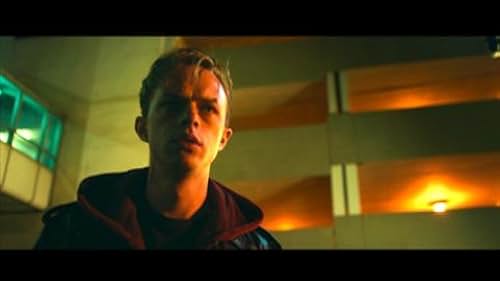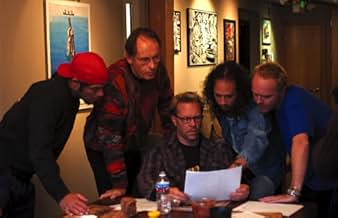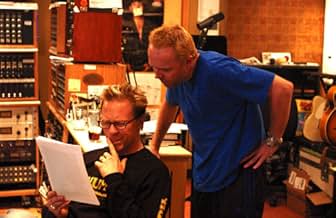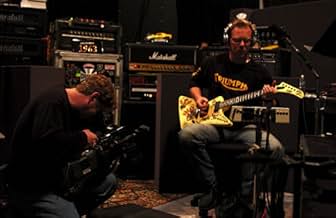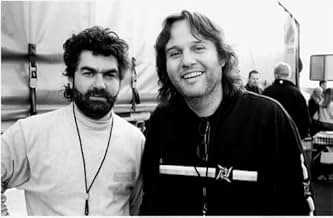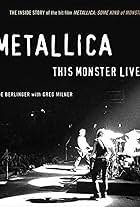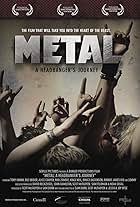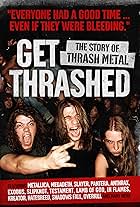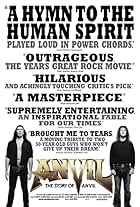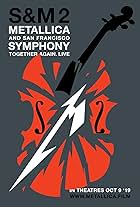The iconic metal band struggles for two years to create their album St. Anger, dealing with alcoholism, the loss of their bass player, and the challenge of working with a psychotherapist.The iconic metal band struggles for two years to create their album St. Anger, dealing with alcoholism, the loss of their bass player, and the challenge of working with a psychotherapist.The iconic metal band struggles for two years to create their album St. Anger, dealing with alcoholism, the loss of their bass player, and the challenge of working with a psychotherapist.
- Awards
- 6 wins & 4 nominations
Cliff Burton
- Self
- (archive footage)
Steffan Chirazi
- Self
- (as Stefan Chirazi)
Storyline
Did you know
- TriviaAll the footage for the film was comprised of 1600 hours of footage and was cut down to 2 Hours and 20 minutes.
- Quotes
[Metallica is asked to record a radio promo]
Lars Ulrich: Hey it's Lars from Metallica. I'm about to stick 50 grand up your ass...
James Hetfield: ...One dollar at a time.
- ConnectionsEdited from MTV News (1989)
- SoundtracksFrantic
Performed by Metallica
Written by James Hetfield (as Hetfield), Lars Ulrich (as Ulrich), Kirk Hammett (as Hammett),
Bob Rock (as Rock)
Courtesy of Elektra Entertainment Group
By Arrangement with Warner Strategic Marketing
Published by Creeping Death Music (ASCAP) and EMI Blackwood Music (Canada) Ltd./Mahina Hoku Publishing (SOCAN),
© 2003
Featured review
The debate over whether or not Michael Moore's `Fahrenheit 9/11' should be called a `documentary' won't be heard hovering around Joe Berlinger and Bruce Sinofsky's (`Brother's Keeper,' `Paradise Lost') `Metallica: Some Kind of Monster' because it is a documentary, an accurate rendering of the rock group's long struggle to create its latest album, `St. Anger.' Although sex and drugs play no role in the film and the groupie adulation is almost non present, making even the most out-of touch viewer skeptical, the battle of frontman James Hetfield with alcohol and the group with dysfunction has the feel of authenticity. We are left with a business partnership reviving its product.
By engaging `performance-enhancement coach' Phil Towle for $40,000 a month, Metallica puts its money where its mouth is-a serious effort to preserve the magic of a group that sold 90 million albums, so much a product of delicate personality bonding that the full time therapist had a real challenge to preserve the indefinable chemistry. Beside Hetfield's demons, drummer Lars Ulrich's Napster battle takes energy from the group, so Towle is probably a small investment in its survival. If heavy metal is not your thing, seeing this group psychodrama would be worth the admission.
Not seeming to fit the overall clinical activity of the film is a scene of Ulrich selling his art collection. Critic Ed Gonzalez gives an insightful explanation:
`There's a moment in the film where Berlinger and Sinofsky force a fascinating correlation between the paintings that hang in Ulrich's home and the music the band makes, calling attention to the relationship between art and the spectator and the way that art is consumed. This scene has absolutely nothing to do with the psych sessions between Metallica and Towle, and it's a great one.'
This kind of organic unity makes it a documentary of artful proportions. I still prefer classical and folk music, but I have to admit to a new interest in a musical genre I can share with my musician grandson Cody.
By engaging `performance-enhancement coach' Phil Towle for $40,000 a month, Metallica puts its money where its mouth is-a serious effort to preserve the magic of a group that sold 90 million albums, so much a product of delicate personality bonding that the full time therapist had a real challenge to preserve the indefinable chemistry. Beside Hetfield's demons, drummer Lars Ulrich's Napster battle takes energy from the group, so Towle is probably a small investment in its survival. If heavy metal is not your thing, seeing this group psychodrama would be worth the admission.
Not seeming to fit the overall clinical activity of the film is a scene of Ulrich selling his art collection. Critic Ed Gonzalez gives an insightful explanation:
`There's a moment in the film where Berlinger and Sinofsky force a fascinating correlation between the paintings that hang in Ulrich's home and the music the band makes, calling attention to the relationship between art and the spectator and the way that art is consumed. This scene has absolutely nothing to do with the psych sessions between Metallica and Towle, and it's a great one.'
This kind of organic unity makes it a documentary of artful proportions. I still prefer classical and folk music, but I have to admit to a new interest in a musical genre I can share with my musician grandson Cody.
- JohnDeSando
- Jul 8, 2004
- Permalink
- How long is Metallica: Some Kind of Monster?Powered by Alexa
Details
- Release date
- Country of origin
- Official site
- Language
- Also known as
- Metallica: Подібний монстру
- Filming locations
- Production companies
- See more company credits at IMDbPro
Box office
- Gross US & Canada
- $1,222,708
- Opening weekend US & Canada
- $46,359
- Jul 11, 2004
- Gross worldwide
- $1,980,444
- Runtime1 hour 24 minutes
- Color
- Sound mix
- Aspect ratio
- 1.33 : 1
Contribute to this page
Suggest an edit or add missing content

Top Gap
By what name was Metallica: Some Kind of Monster (2004) officially released in India in English?
Answer


